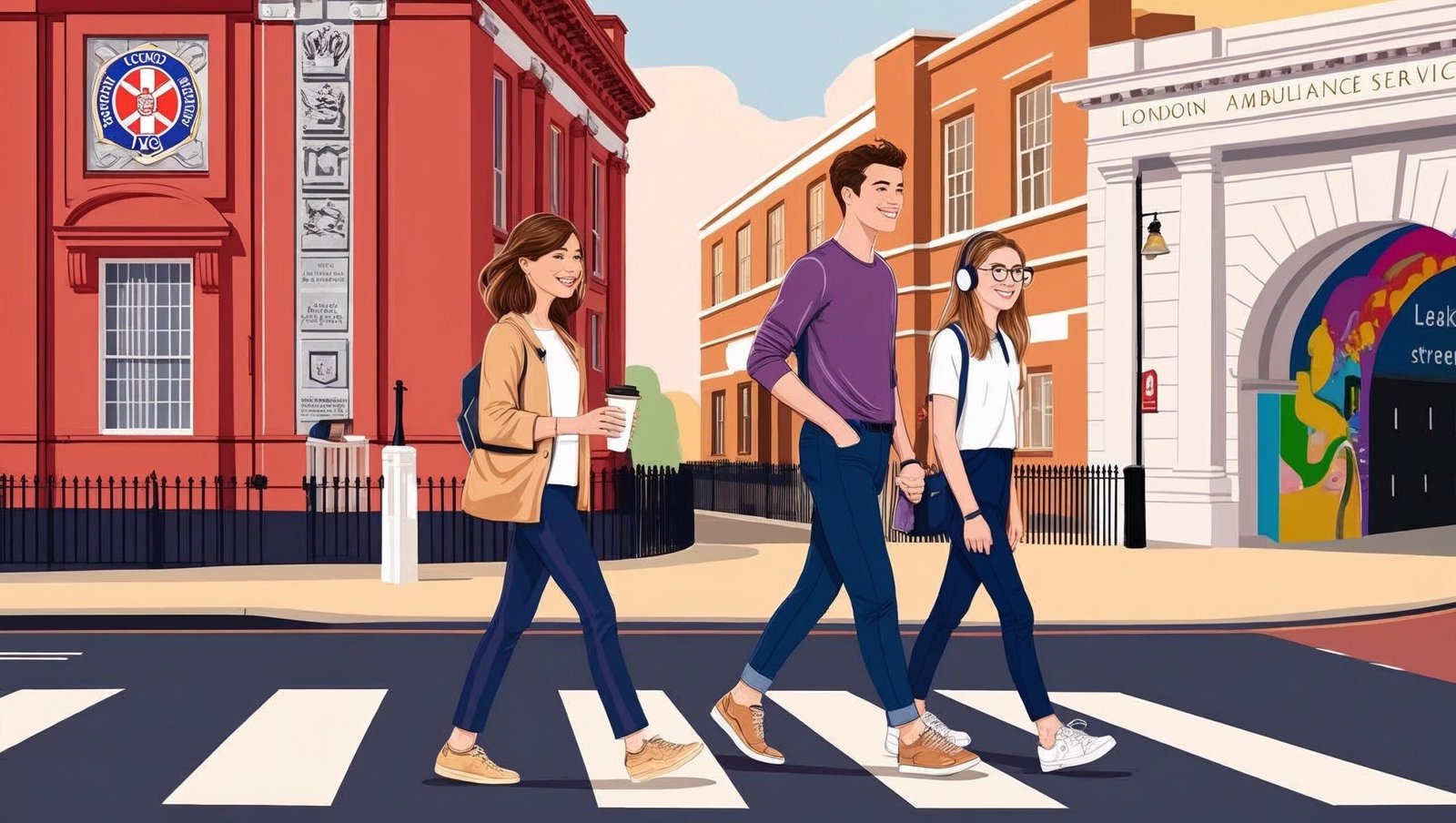Step out of Waterloo Station and London’s pulse slows just enough for you to keep up. A Georgian terrace peeks round one corner, a burst of legal street-art blazes beneath the tracks, and somewhere between them a Pret barista still has the grace to hand you a free 7 a.m. flat white. Drivers even pause for pedestrians—proof, surely, of local magic.
Layers of History on a Fifteen-Minute Loop
Begin with The Old Vic on The Cut, opened in 1818 and still an independent cultural force after fires, bombs and a revolving cast of celebrity artistic directors. Cross Waterloo Road to St John’s Waterloo, a neoclassical church of 1824, recently revived by a £5.5 million restoration that reopened its crypts as community art studios in 2022.
A block north, history puts on its high-vis jacket. The red-brick pile at 150 Waterloo Road began life in 1908-11 as Waterloo Road Fire Station, designed for the London County Council by H. F. T. Cooper under Owen Fleming and Charles Winmill. Its colossal stone frieze still shouts LCC FIRE BRIGADE—but inside, the hoses were swapped for heart monitors when it became London Ambulance Service Headquarters in 1986. Today the Grade II-listed building houses LAS admin upstairs and the aptly named Fire Station Bar on the former engine-bay floor—Edwardian civic pride with a side of espresso martinis.
pubology.co.uk
Just south at 220 Waterloo Road stands the service’s concrete-and-glass control centre, opened in 1973. From these rooms, staff now coordinate more than 5,000 emergency calls a day across Greater London, while a modest war-memorial plaque beside the doors honours ambulance crews lost in the line of duty.
A few minutes east lies the Roupell Street Conservation Area, an almost untouched grid of late-Georgian cottages whose builder’s heir forged deeds, stole the estate and ended up exiled to Australia—a Victorian soap opera in brick.
Dip under the tracks into Leake Street Arches, London’s only fully legal graffiti tunnel. Since Banksy’s 2008 Cans Festival, its 180-metre sweep has turned into a living gallery where new murals appear hourly and the air smells faintly of aerosol and espresso. Push on to the river and two contrasting 20th-century statements finish the loop: County Hall, an Edwardian-Baroque colossus opened in 1922, and the Royal Festival Hall, sparkling centrepiece of the 1951 Festival of Britain and the heartbeat of today’s Southbank Centre.
Everyday Vibe
What makes Waterloo special is that these layers coexist without elbowing each other off the pavement. Theatre-goers in evening dress queue outside the Old Vic while cyclists zip to work; tourists photograph street art two blocks from Georgian houses that still hang laundry in back gardens; and the South Bank’s riverside walk is a stroller-friendly artery to the London Eye.
Hidden-Gem Cafés (Fuel for Further Wandering)
Lower Marsh is the local caffeine goldmine. Four Corners pairs Ozone coffee with walls papered in vintage postcards, Scooterworks brews espresso in a former Vespa workshop, and Vaulty Towers serves lattes beneath a tree-house mezzanine that morphs into karaoke after dusk.
Reflection
For me—and for my neurodivergent teen son who rates neighbourhoods by sensory comfort—Waterloo balances big-city electricity with pockets of calm. Historic brick, bomb-era concrete and neon spray-paint shouldn’t blend, yet they do, like a playlist that jumps from Shakespeare to synthwave but keeps perfect tempo.
Conclusion & Rating
Waterloo (Southwark) is a living collage: Georgian terraces, rebellious tunnels, ambulance sirens ready for action, riverside icons and lattes before dawn. You feel London’s energy but rarely its panic, and the value-for-experience ratio is sky-high. Which under-the-radar Waterloo café—or another historic corner I’ve missed—deserves our next deep dive? Let me know below; I’ll lace up my walking shoes and report back.
Rating: ★★★★☆ | 💛 Value Heart


